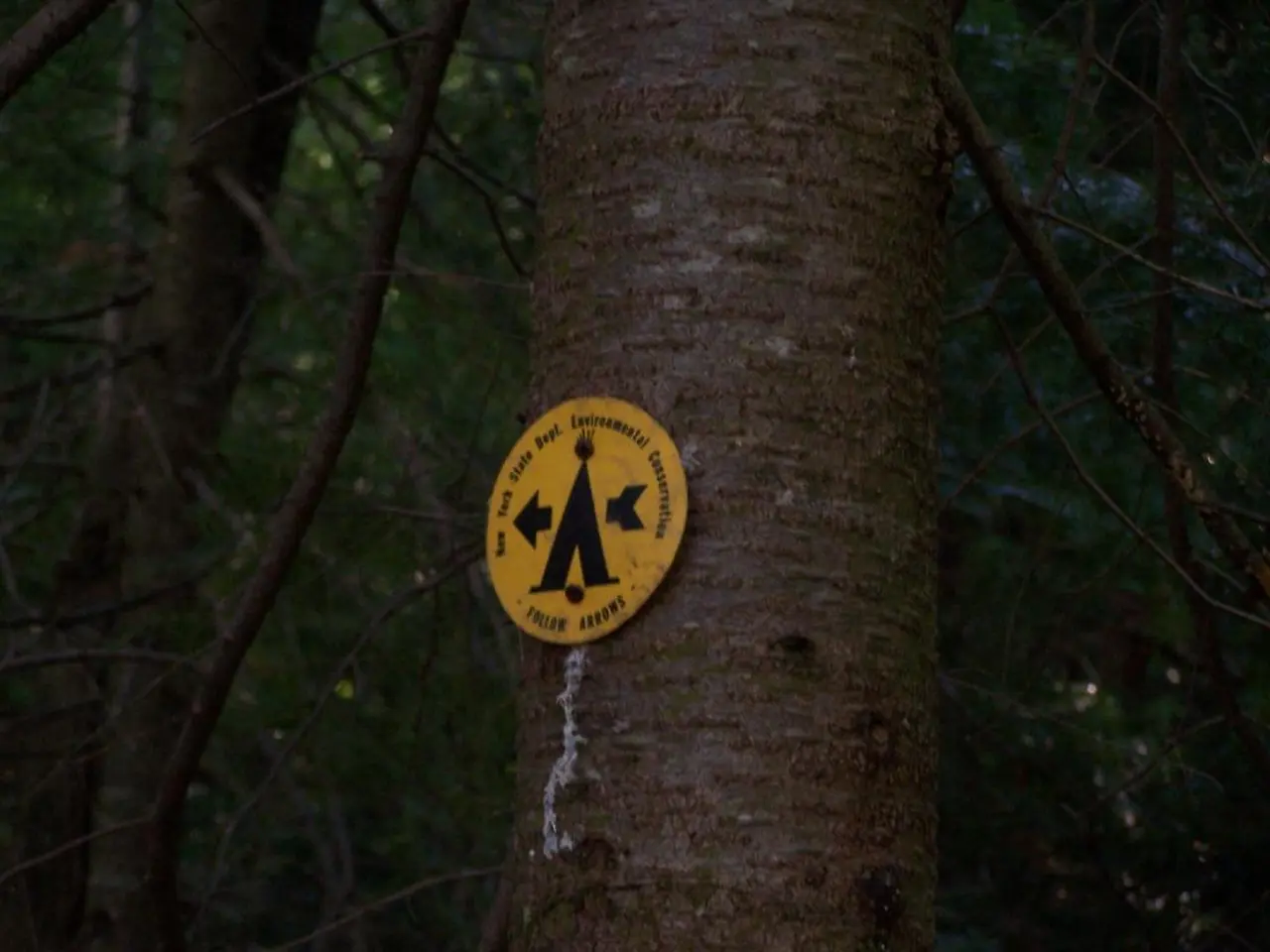Illegally Mining Gold in the Amazon: Uncovering Evidence through the Persistence of Trees
Unveiling the Hidden History of Mercury Pollution in the Amazon Rainforest
A groundbreaking study is revealing the potential of tree rings as biomonitors for illegal gold mining and mercury emissions in the Amazon rainforest. This innovative approach could provide vital insights into the long-term environmental impact of mining activities and help protect the region's biodiversity.
The method, which has proven to be cost-effective and widespread, allows for the tracking of mining activity, even in remote areas. Researchers have identified certain tree species, such as the wild fig (Ficus insipida), as effective biomonitors for mercury emissions.
Trees absorb mercury from atmospheric deposition and contaminated soil or water, and these elements get incorporated into the wood as it grows each year. By analyzing the chemical composition and isotopic signatures of mercury within individual tree rings, scientists can reconstruct the timeline and intensity of mercury pollution related to artisanal and small-scale gold mining (ASGM) activities.
This dendrochemical approach offers a non-invasive, historical biomonitoring tool to assess the spatial and temporal patterns of mercury pollution in remote forest ecosystems of the Amazon. It complements other environmental monitoring methods and offers insight into legacy contamination that might be missed by short-term sampling.
Moreover, the measurement of stable mercury isotopes in tree rings further allows differentiation between natural background levels and anthropogenic mercury from mining emissions. This technique can help authorities identify illegal mining hotspots and take necessary action to mitigate the environmental damage.
The exploration of new tree species could lead to a more accurate and comprehensive monitoring of mercury emissions. By examining tree rings, scientists can determine when and where mercury was released into the environment, providing valuable information for policymakers and environmentalists.
Further studies aim to improve the accuracy and applicability of using tree rings as biomonitors for mercury pollution. This ongoing exploration and refinement of the biomonitoring approach could contribute to the expansion of knowledge in the field of environmental science.
Mercury exposure poses severe health risks to humans and wildlife. By understanding the historical uptake of mercury in tree rings, researchers can assess the long-term environmental impact of mining activities and help identify new strategies for protecting the Amazon's biodiversity and maintaining global ecological balance.
The collaboration between researchers and policymakers can help protect the Amazon's ecosystems through innovative solutions. This continued research underscores the importance of science in addressing environmental challenges, such as illegal gold mining in the Amazon. It also highlights the significance of protecting the Amazon's biodiversity for global ecological balance.
As the research progresses, the potential applications of this biomonitoring technique in other regions could have a global impact on addressing mercury pollution. Further research is needed to expand the understanding of this biomonitoring approach and its potential applications in other mining regions.
- The groundbreaking study of tree rings as biomonitors for illegal gold mining and mercury emissions in the Amazon rainforest could provide crucial insights into the long-term impact of mining activities on biodiversity and ecosystems.
- Scientists are utilizing a previously unexplored method to track mining activity in remote areas, which could enhance our understanding of environmental conservation and health-and-wellness concerns related to climate change, neurological disorders, and medical-conditions caused by mercury exposure.
- Researchers have identified various tree species, such as the wild fig (Ficus insipida), as effective biomonitors for mercury emissions, furthering the advancement of environmental science and offering solutions for the monitoring of biodiversity.
- By analyzing the chemical composition and isotopic signatures of mercury within individual tree rings, this dendrochemical approach can help authorities detect illegal mining hotspots and take prompt action to mitigate environmental damage, thereby contributing to the overall goal of environmental health and wellness.
- As the research progresses, exploring new tree species and improving the accuracy of the biomonitoring approach could lead to a more comprehensive understanding of mercury emissions and their implications for wildlife, ecosystems, and public health.
- This ongoing exploration and refinement of the biomonitoring technique have significant implications for other regions struggling with mercury pollution, demonstrating the power of collaboration between researchers, policymakers, and environmentalists in addressing global environmental challenges.




